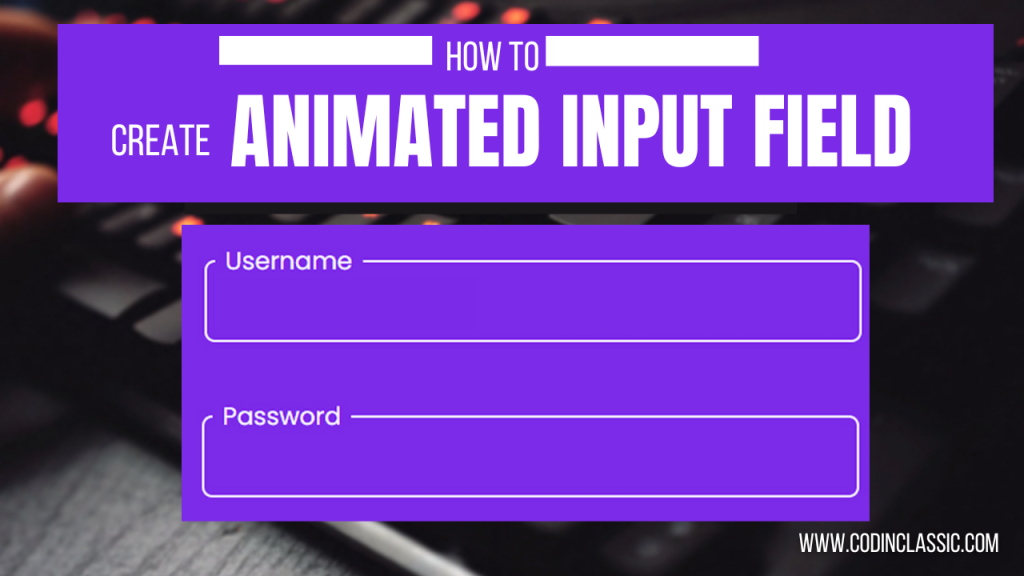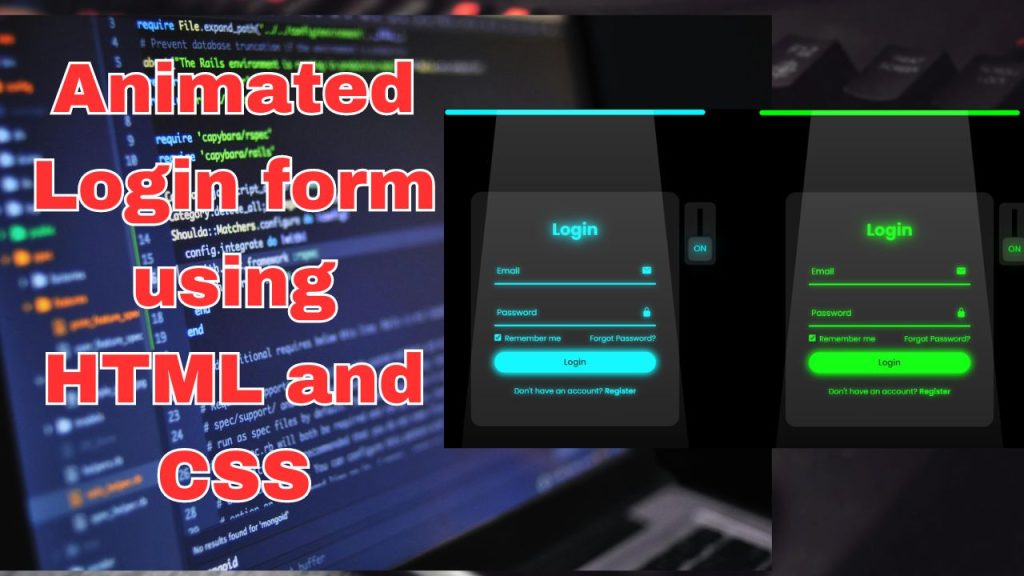
This article explores creating animated CSS input fields. HTML and CSS evolve in the dynamic realm of web development, consistently providing inventive ways to enhance user experiences. Among these advancements, animated input fields emerge as a potent means to engage users and enhance usability. Through seamless integration of animations into input fields, developers can fashion interfaces that are visually appealing, intuitive, and user-friendly.
Video Tutorial:
Using HTML and CSS, animated input fields introduce an interactive dimension surpassing conventional static forms. These dynamic animations inject vitality into typically ordinary input elements, morphing them into lively components that effortlessly seize users’ focus and navigate them through input procedures seamlessly.
HTML forms the essence of animated input fields, serving as the markup language that organizes web content. It offers the groundwork for crafting input elements like text fields, checkboxes, radio buttons, and beyond. Through harnessing HTML’s adaptability, developers establish the framework for animated input fields that dynamically react to user engagements.
However,CSS, the web’s styling language, assumes a crucial role in animating these input fields, infusing them with vitality. Utilizing CSS animations and transitions, developers infuse input fields with fluidity and sophistication, elevating the user experience to be more captivating and pleasurable.
A typical use of animated input fields involves employing hover effects to offer users visual cues. As users hover over an input field, CSS animations can initiate alterations in color, dimension, or transparency, signaling the field’s interactivity and readiness for input. These understated animations not only attract users’ focus but also enhance the interface’s intuitiveness and responsiveness.
One frequently used method involves animating the label of an input field to transition seamlessly as the field gains focus. This technique enhances clarity and usability by ensuring users can easily identify the input field they’re interacting with. Developers achieve this by animating the label’s position or style, creating a smooth transition that reduces confusion and improves the overall user experience.
Moreover, animated input fields offer a means to elevate form validation by offering users visual prompts during data input. For instance, CSS animations can be employed to emphasize invalid input fields or present error messages in an aesthetically pleasing format, aiding users in promptly recognizing and rectifying any errors. This approach not only improves the user experience but also contributes to a smoother and more efficient data entry process.
In integrating animated input fields, developers need to find the sweet spot between creativity and functionality. Although eye-catching animations can grab attention, they shouldn’t overshadow the main aim of ensuring seamless and effective user engagement. Thus, it’s vital to select animations that enrich user interaction without becoming intrusive or overpowering. Balancing creativity with usability ensures that the user experience remains both engaging and intuitive.
The charm of animated input fields is their capacity to enhance user experience while maintaining functionality. These animations not only inject style and visual appeal into the interface but also fulfill a utilitarian role by streamlining the input process, making it more instinctive and effective.
Index.html (file name)
This HTML code sets up a basic webpage with two input fields for username and password. The <head> section contains metadata such as character encoding, viewport settings, and a title for the webpage. Additionally, it links an external CSS file for styling. The <body> section contains the input fields wrapped inside <div> containers, each with an input field and a corresponding label. The labels are associated with the input fields using the for attribute, which improves accessibility and usability.
Conclusion
To sum up, the integration of animated input fields marks a notable progression in web design, providing a pathway to crafting interfaces that captivate users and enhance usability. Through the fusion of HTML and CSS capabilities, developers unlock the potential of animations to enrich the user journey, augment functionality, and deliver visually striking interfaces that resonate with audiences.

